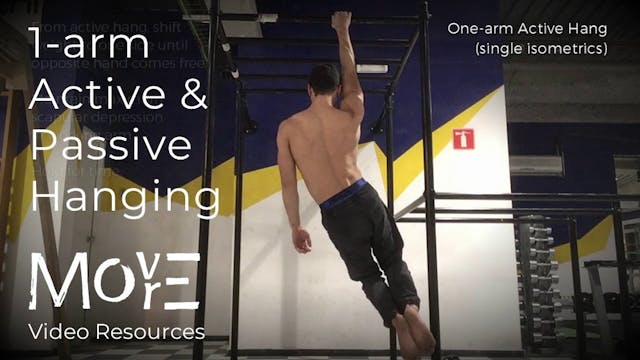Fundamental hanging contexts
Shoulder-mobility (range-development)
•
4m 21s
THE WHAT & HOW:
A simple reason for the perspective and practice of hanging is that, as with the fundamental resting or 'passive' squat, it is a movement pattern built into our physiology which becomes not only neglected, but culturally & socially discouraged as we become adults.
The disuse of such fundamental patterns - essentially the maximal compression (squat) and extension (hanging) of our structures - contributes to a range of physiological ailments, from reduced digestive motility to low-back & shoulder-pain.
LEARN MORE (subscriber-only):
https://drive.google.com/file/d/1L9O0154xy0XR9ft7tPlC2PEpBorDwJzI/view?usp=drive_link
__________________________________
For programming, guidance, & support for your physical practice:
FREE fundamental prehabilitation program: https://www.movemoremp.com
Online Support (1 to 1 coaching): https://movemoremp.com/onlinesupport
Elements (standardised programs): https://www.movemoremp.com/elements
[email protected]
Up Next in Shoulder-mobility (range-development)
-
1-arm 'passive' & 'active' hang
THE WHAT & HOW:
The two ends of the overhead-pulling kinetic chain are the hands (connecting the arms to the anchor-point), and the scapulae (connecting the arms to the body). Developing the 'Passive' and 'Active' hang unilaterally (i.e. 1-arm), follows the same progression perspective as bilater... -
Culturing movement habits: Hanging at...
THE WHAT:
Hanging is a movement habit that requires culturing. The benefits of regular hanging are many, but primarily related to decompression of the shoulder & improving the quality of its connective tissues and identifying & releasing excessive resting muscle tone around the lumbar spine.For...
-
Prone crossed-arm stretch
THE WHAT:
A simple & accessible form for loaded stretching of the posterior shoulder & scapular musculature. It is particularly valuable to practice in combination with efforts to develop 'neural-drive' (i.e. ability to intrinsically move) in the scapular musculature with the likes of scapular ro...



